I am an LA native–born and raised, in the San Fernando Valley. I have been drawing, painting, creating for as long as I could remember but had not truly pursued the practice until High School, which like any good art class, I was heavily criticized, sometimes praised, discouraged by peers and family, but powered through. Therefore, after three years of college, attempting a degree in which I could not see a real future in, I left, returned to Los Angeles, and began my career in painting on my own.
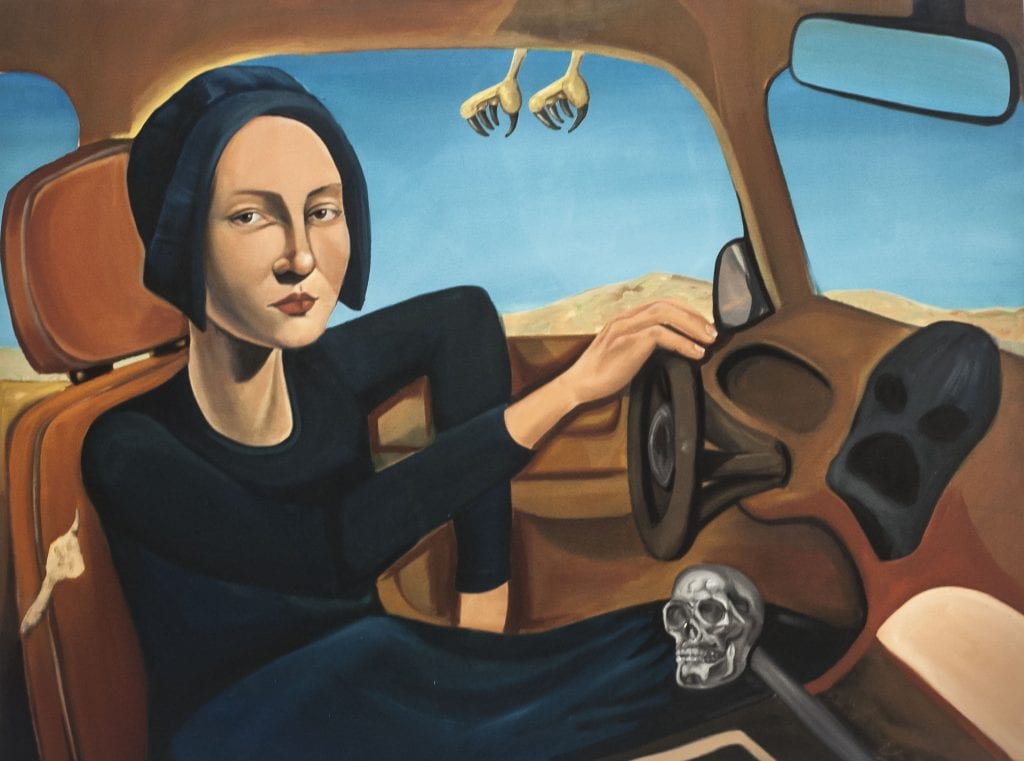
Courtesy of the artist
The paintings I create are direct influences from my experiences–whether that is a life event, inspiring film, an intriguing story I read, a story a friend told me, etc. I try to pay close attention to my environment and recreate that in my paintings.
I rarely sketch. Most of the time, I pretty much know what kind of message I want to convey, which colors I want to use, and if the work will be of a man, woman, or both. And If I get stuck, I look back at the masters (Carravaggio, Velasquez, Bacon) and to understand how to be simple, yet wildly expressive without giving anything away too quickly. That’s the most difficult part, I believe, that a lot of artists face, so many of my paintings are finished based on my determination to be expressive while lacking obvious expression of that message. Also, I keep my studio a mess and if everything was clean, I would be lost. I get a lot of criticism from people who come into my studio for that. Everyone’s got somethin’.
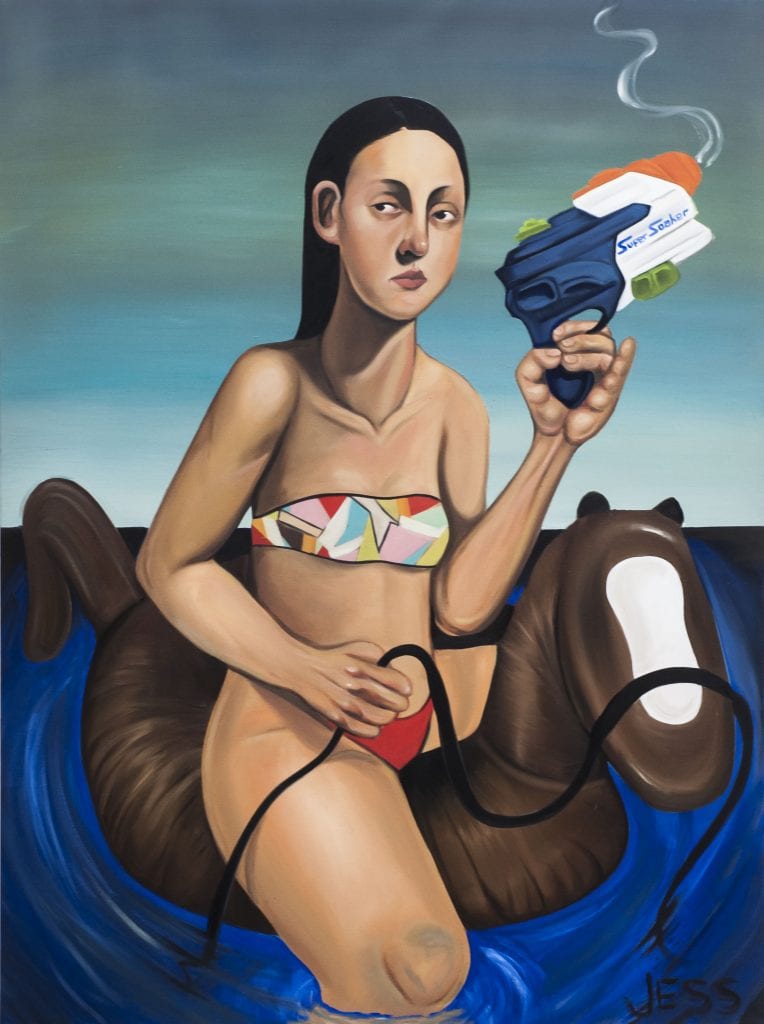
Courtesy of the artist
Studio days are every day and they are tough, but well worth it. I live an hour away, entering Skid Row from Woodland Hills. I wave to the boys in the parking structure, offer my security guard coffee, climb four flights of stairs with a totebag that holds my laptop, charger, a book (usually Kitchen Confidential, Naked Lunch, or something by Joan Didion), and a notebook. I play music and work. Usually I have something that is already in the works, needing to be finished, but if that’s not the case, I grab my laptop and look at the screenshots of references I have in a folder titled “inspo” and work from there. “Going For a Ride” is a painting made up from a screenshot of Buster Scruggs, the UK show “Grand Tour”, my face, and my high school ex’s cool car. Everything comes usually together in the end.
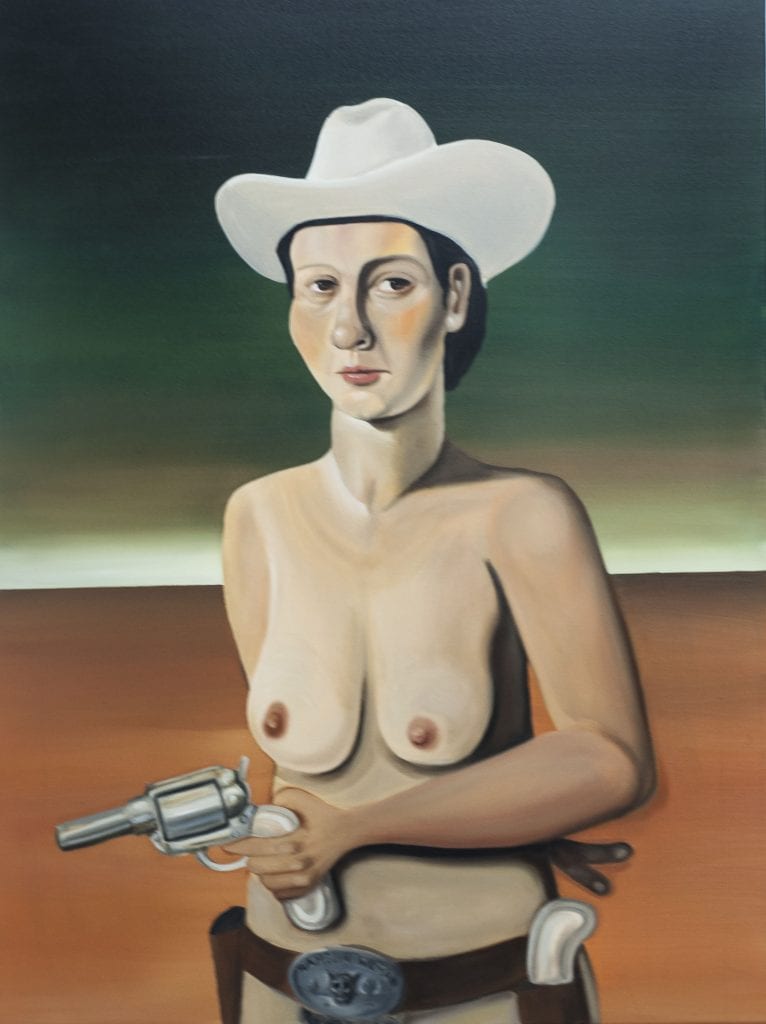
Courtesy of the artist
Not exactly. I mean, I have always drawn figures. I was not necessarily a landscape-art kind of person, although I just found an appreciation for that work. When I decided to be a painter, I figured the most challenging part would be developing a style someone could recognize while still being true to my own. I only just found that this year. My old work; paintings of my friends and family; were pretty much just helping me figure out which part of my process made me feel the best (or worst) and to go with that.
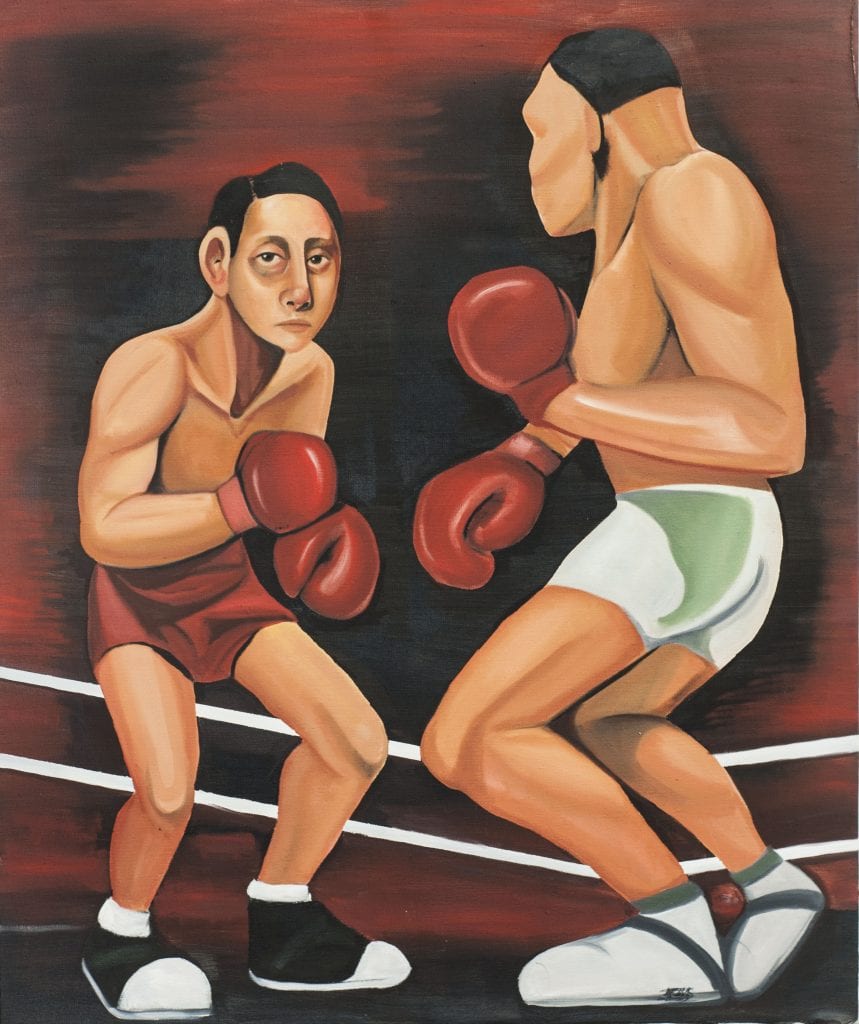
Courtesy of the artist
I have always enjoyed painting people, but placing them into this universe that I have created and of which I vicariously live through is very new.
Not to sound cliche, which sounds cliche anyway; my inspiration comes from everywhere. Films, books, and other stories, like I said before, play a large roll. However, my message is almost always having to do with myself or someone in my life. This is heartbreak, loss, confusion, inequality, fear, joy, exhaustion, misunderstood, etc. I see that stuff everywhere; not just in my life; but I assume that I am not alone in these kinds of experiences. Maybe I just process them differently. So, the work is usually my coping mechanism. Rather than actually express emotion, literally, in real life, I paint. It is like those people who have a really difficult time saying “goodbye”. My work is kind of a method of my saying goodbye, in a way, when I really struggle with that.
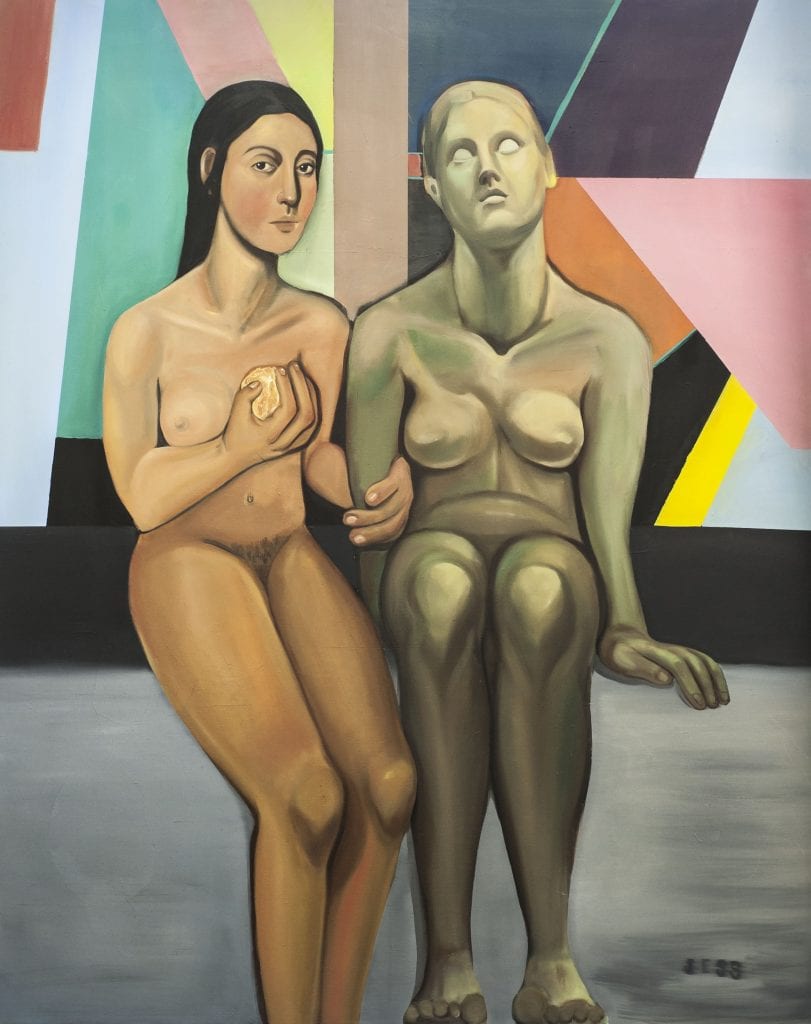
Courtesy of the artist
What source material do you base your work off of?
Living so far away, I often go out after I work to wait out the traffic. Often times, I meet people who are super fascinating, or beautiful, or both, or abhorrent, and I think that I want to paint them or my interaction with them. The time, the setting, the connection or lack there-of, already are helping me create a narrative for a painting in my head. That also does not mean going out all the time is great, but it’s..you know…educational?
I am a big film fan. I love good use of color, the unexpected narrative that flips you off your heels, and the style of frame that these men and women do in the film industry. So, I take a look at that a lot. I especially pay attention to Wes Anderson, Scorcese, Tarantino, and a ton of my friends who are incredible in that work. Attention to design really does help my narratives seem more expressive.
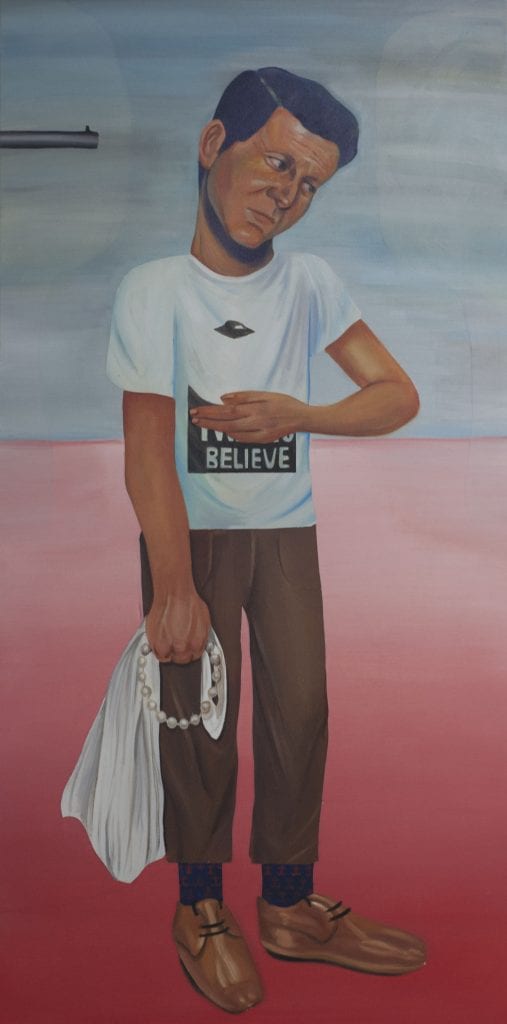
Courtesy of the artist
Does your work reference any Art Historical movements?
Picasso’s primitive paintings were works that I had discovered later, but now influence me with almost every painting. The baroque and other renaissance work taught me a ton about how a shadow can make you feel. DADA work showed me you can have fun, be satirical, and not take anything too seriously except for self-respect and a drive to create. The current movement of this art-market has taught me that it is important to pay little attention to what is “popular” and to make that work because I love it and I know how to.
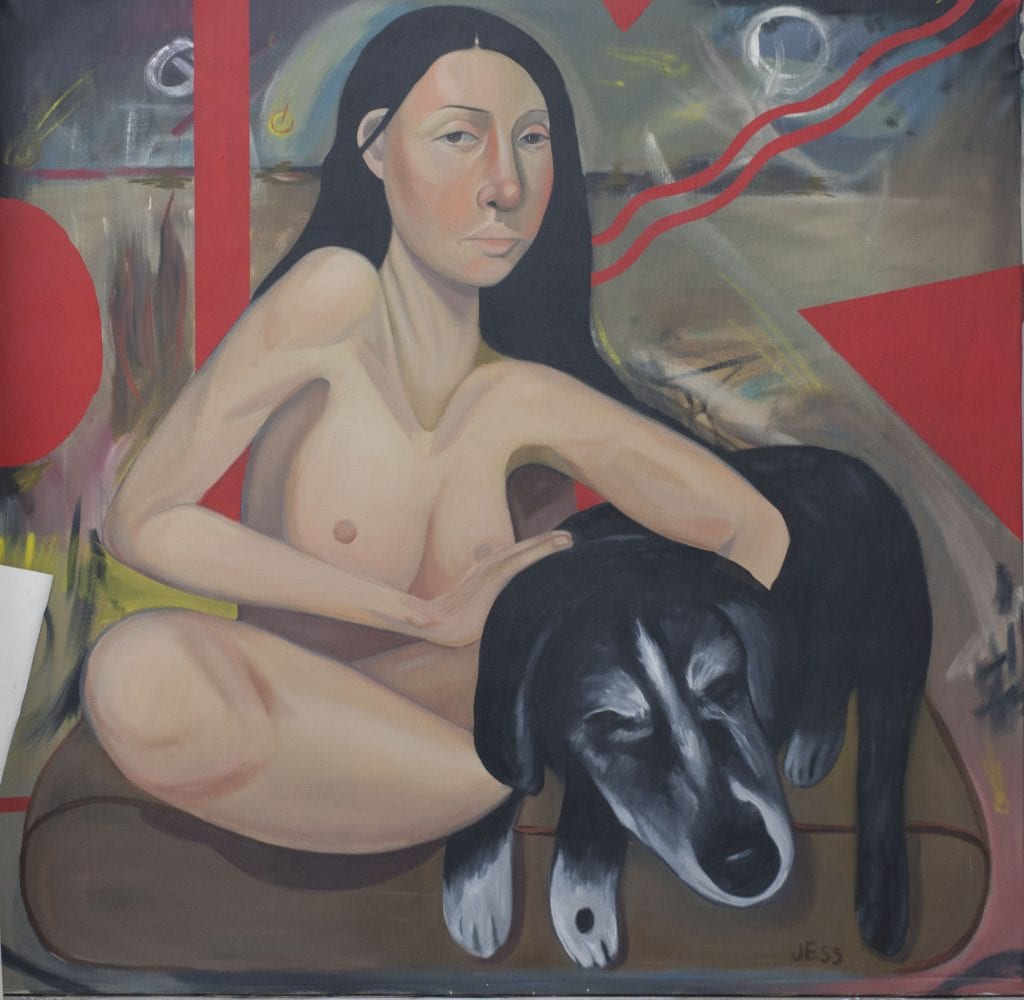
Courtesy of the artist
What is next is just to keep working. I am enthusiastic about applying everything that I have learned in 2019, as a self-taught artist on my own, to what I will create in 2020.
Interview Camilla Engstrom and Jake Troll! They’re incredible artists and have a lot on their minds.